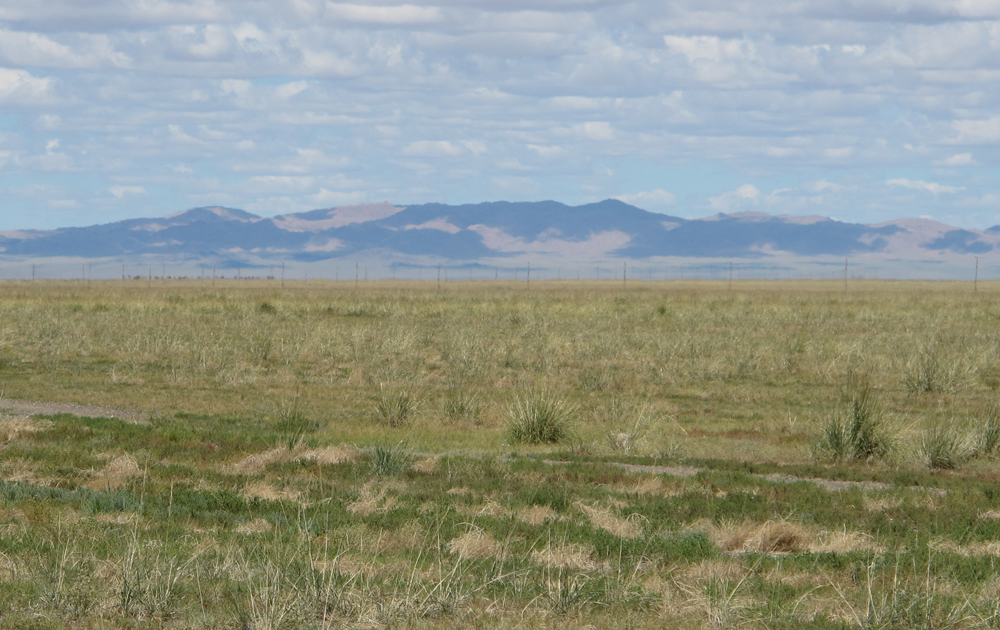Project Description
High Topography in Continental Interiors
With its focus on the lateral motion of lithospheric plates, plate tectonics effectively explains many first-order observations about Earth, such as the global distribution of earthquakes, volcanoes, and mountain belts, the relative height and age of continents and ocean basins, and the transfer of material between the surface and deeper parts of the Earth at subduction zones and rifts. While vertical motion, uplift and subsidence, have long been recognized as an important part of continental geology, the formation of continental plateaus is not predicted by plate tectonics. The goal of this project is to understand the processes responsible for developing high topography in continental interiors and to place them in within the larger framework of plate tectonics.

The Hangay rise over 2 kilometers above the surrounding topography.
Why study the Hangay?
The Hangay in Mongolia represent a region of high topography embedded deep within the continental interior of Central Asia. Several lines of evidence suggest that the high-elevation low-relief topography in the Hangay developed recently in geologic terms, and that the geodynamic processes responsible for uplift are still active. Studying a young, active intracontinental uplift provides a special opportunity to observe and unravel these processes. More broadly, the interconnection between deformation of the continents, the development of topography, and global climate is an active area of earth science research. Study of the Hangay Dome will help us better understand the workings of our dynamic planet and how Earth processes impact the environment in which we live.
Our Work
Our work focuses on characterizing the physical properties and structure of the lithosphere and sublithospheric mantle, and the timing, rate, and pattern of surface uplift in the Hangay. We are carrying out studies in geomorphology, geochronology, thermochronology, paleoaltimetry, biogeography, petrology, geochemistry, and seismology.

